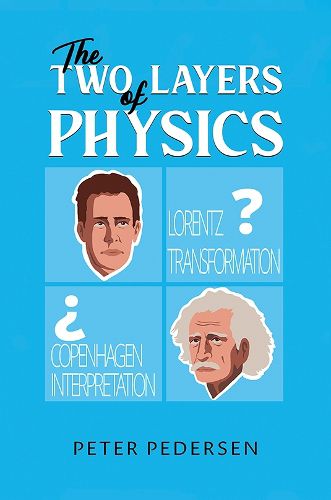Readings Newsletter
Become a Readings Member to make your shopping experience even easier.
Sign in or sign up for free!
You’re not far away from qualifying for FREE standard shipping within Australia
You’ve qualified for FREE standard shipping within Australia
The cart is loading…






This title is printed to order. This book may have been self-published. If so, we cannot guarantee the quality of the content. In the main most books will have gone through the editing process however some may not. We therefore suggest that you be aware of this before ordering this book. If in doubt check either the author or publisher’s details as we are unable to accept any returns unless they are faulty. Please contact us if you have any questions.
According to the standard interpretation of quantum mechanics, the wave function is a pure mathematical entity with no other reality, than that its size renders the probability of observing a particle at a given position in space. The author, on the other hand, believes, that the wave field is very real and that it directs the particles into the observed positions by exerting forces upon them. More importantly, he claims that he has found experimental proof of this. These experiments are described in detail in the book and may easily be repeated by anyone interested. Apart from proving the main point, the experiments yield some astounding results which, among other things, suggest that here are signals that move faster than light in contradiction with Einstein's theory. It is well-known that a similar situation arises in connection with the phenomenon of entanglement. This leads the author to a closer examination of the basics of the two theories of relativity. As he tries to make quantum mechanics more easily comprehensible, so with relativity. He reintroduces the concepts of absolute time and absolute mass, and on this basis makes surprising new derivations of Einstein's famous energy equation, the dependence of mass with velocity and of the formula for the time dilation. A final question. Can consciousness play any role in physical theory? The author answers affirmatively, and in fact he makes diligent use of the concept in his models. Hence the title of the book.
$9.00 standard shipping within Australia
FREE standard shipping within Australia for orders over $100.00
Express & International shipping calculated at checkout
This title is printed to order. This book may have been self-published. If so, we cannot guarantee the quality of the content. In the main most books will have gone through the editing process however some may not. We therefore suggest that you be aware of this before ordering this book. If in doubt check either the author or publisher’s details as we are unable to accept any returns unless they are faulty. Please contact us if you have any questions.
According to the standard interpretation of quantum mechanics, the wave function is a pure mathematical entity with no other reality, than that its size renders the probability of observing a particle at a given position in space. The author, on the other hand, believes, that the wave field is very real and that it directs the particles into the observed positions by exerting forces upon them. More importantly, he claims that he has found experimental proof of this. These experiments are described in detail in the book and may easily be repeated by anyone interested. Apart from proving the main point, the experiments yield some astounding results which, among other things, suggest that here are signals that move faster than light in contradiction with Einstein's theory. It is well-known that a similar situation arises in connection with the phenomenon of entanglement. This leads the author to a closer examination of the basics of the two theories of relativity. As he tries to make quantum mechanics more easily comprehensible, so with relativity. He reintroduces the concepts of absolute time and absolute mass, and on this basis makes surprising new derivations of Einstein's famous energy equation, the dependence of mass with velocity and of the formula for the time dilation. A final question. Can consciousness play any role in physical theory? The author answers affirmatively, and in fact he makes diligent use of the concept in his models. Hence the title of the book.